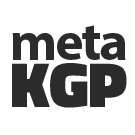EC21103: Introduction To Electronics
| EC21103 | |||||||||||||||||||||||||||||
|---|---|---|---|---|---|---|---|---|---|---|---|---|---|---|---|---|---|---|---|---|---|---|---|---|---|---|---|---|---|
| Course name | Introduction To Electronics | ||||||||||||||||||||||||||||
| Offered by | Electronics & Electrical Communication Engineering | ||||||||||||||||||||||||||||
| Credits | 4 | ||||||||||||||||||||||||||||
| L-T-P | 3-1-0 | ||||||||||||||||||||||||||||
| Professor(s) | Sudip Nag; Mrinal Kanti Mandal; Basudev Lahiri | ||||||||||||||||||||||||||||
| Previous Year Grade Distribution | |||||||||||||||||||||||||||||
| |||||||||||||||||||||||||||||
| Semester | Autumn | ||||||||||||||||||||||||||||
Syllabus
Syllabus mentioned in ERP
Pre-requisites: None Introduction to Electronic devices: passive devices, diode, bipolar junction transistor (BJT), metal oxide semiconductor field-effect transistor (MOSFET); Diode: basic structure and operating principle, current-voltage characteristic, large and small-signal models, iterative and graphical analysis; Diode Applications : rectifier circuits (half-wave and full-wave rectifiers, rectifiers with capacitor filter), voltage regulator (using Zener diode), clipper (limiter) circuits, clamper circuits; Bipolar Junction Transistors and their Applications: structure and modes of operation; n-p-n and p-n-p transistor in active mode, DC analysis of both transistor circuits; BJT as an amplifier, small-signal equivalent circuits, single-stage BJT amplifier (common-emitter mode); BJT as a switch; Metal Oxide Semiconductor Field-Effect Transistors and their Applications: structure and physical operation of n-type and p-type MOSFET; DC analysis of MOSFET circuits; MOSFET as an amplifier, small-signal equivalent circuits, single-stage MOSFET amplifier (common-source mode); MOSFET as a switch; Operational Amplifier (Op Amp) : ideal op amp; inverting amplifier, amplifier with a T-network, effect of finite gain, summing amplifier; non-inverting configuration, voltage follower; op amp applications like current-to-voltage converter, voltage-to-current converter, difference amplifier, instrumentation amplifier, integrator and differentiator; Feedback: basic concepts of negative feedback; four ideal feedback topologies; Oscillators: basic principles of sinusoidal oscillation; Example circuits; Digital Electronics: Boolean algebra and rules of simplification; combinational circuits like adder, decoder, encoder, multiplexer and demultiplexer; sequential circuits like flip-flops, counters and shift registers.
Concepts taught in class
Student Opinion
A very important course for all the students as it builds up the founding blocks for the world of Electronics. Courses such as Analog and Digital circuits heavily depend on your knowledge in this course.
How to Crack the Paper
Razavi is there to rescue:
https://www.youtube.com/playlist?list=PL7qUW0KPfsIIOPOKL84wK_Qj9N7gvJX6v
https://www.youtube.com/playlist?list=PLiDoPUX9nLkIw9EnIv_3K19wlcyJ6msYd (ONLY SOME TOPICS THERE WILL BE HELPFUL)
Neso Analog: https://www.youtube.com/playlist?list=PLBlnK6fEyqRiw-GZRqfnlVIBz9dxrqHJS
Neso Digital: https://www.youtube.com/playlist?list=PLBlnK6fEyqRjMH3mWf6kwqiTbT798eAOm
Classroom resources
Textbook: Microelectronics by Donald A. Neamen https://easyengineering.net/microelectronics-circuit-analysis-and-design-by-donald-neamen/
Solution manual: https://www.academia.edu/14617905/Microelectronics_Circuit_Analysis_and_Design_Donald_Neamen_4th_Solutions
Microelectronics by Sedera Smith: http://fuuu.be/polytech/ELECH402/Microelectronic%20Circuits%20by%20Sedra%20Smith,5th%20edition.pdf
Electronic Devices and Circuit Theory (Boylestad) : https://www.google.com/search?safe=active&rlz=1C1CHBF_enIN752IN753&ei=nwsaXJ6SKImOvQSZ1KSYBQ&q=boylestad+10th+edition&oq=boyl&gs_l=psy-ab.1.0.0i67l2j0i131j0i20i263j0l2j0i67j0l3.46799.47857..50047...0.0..0.228.885.2-4......0....1..gws-wiz.......35i39.1UuB-sfc9ng
Additional Resources
Time Table
| Day | 8:00-8:55 am | 9:00-9:55 am | 10:00-10:55 am | 11:00-11:55 am | 12:00-12:55 pm | 2:00-2:55 pm | 3:00-3:55 pm | 4:00-4:55 pm | 5:00-5:55 pm | |
|---|---|---|---|---|---|---|---|---|---|---|
| Monday | ||||||||||
| Tuesday | ||||||||||
| Wednesday | NR321,NR322 | |||||||||
| Thursday | NR321,NR322 | |||||||||
| Friday | NR321,NR322 | NR321,NR322 |
